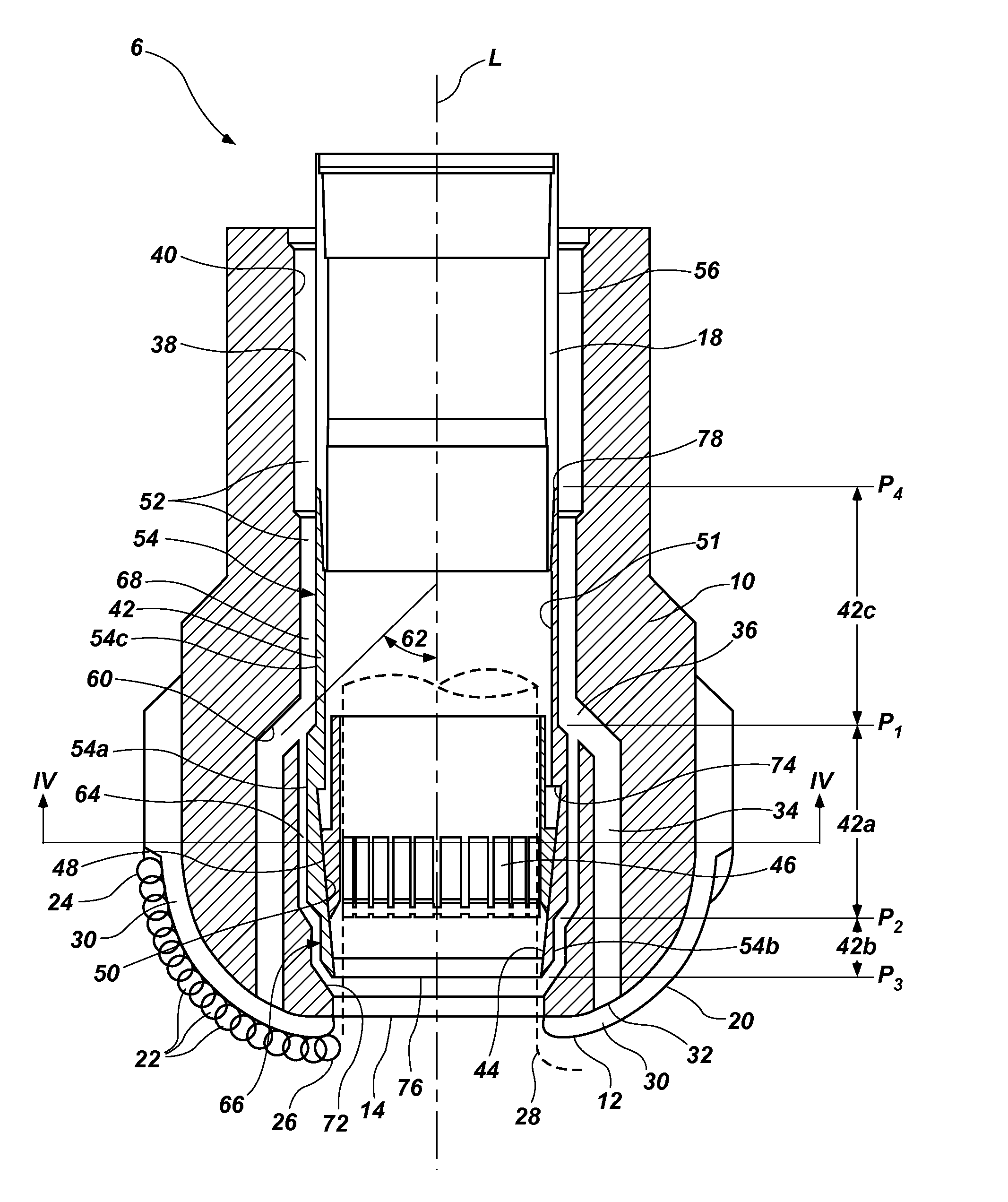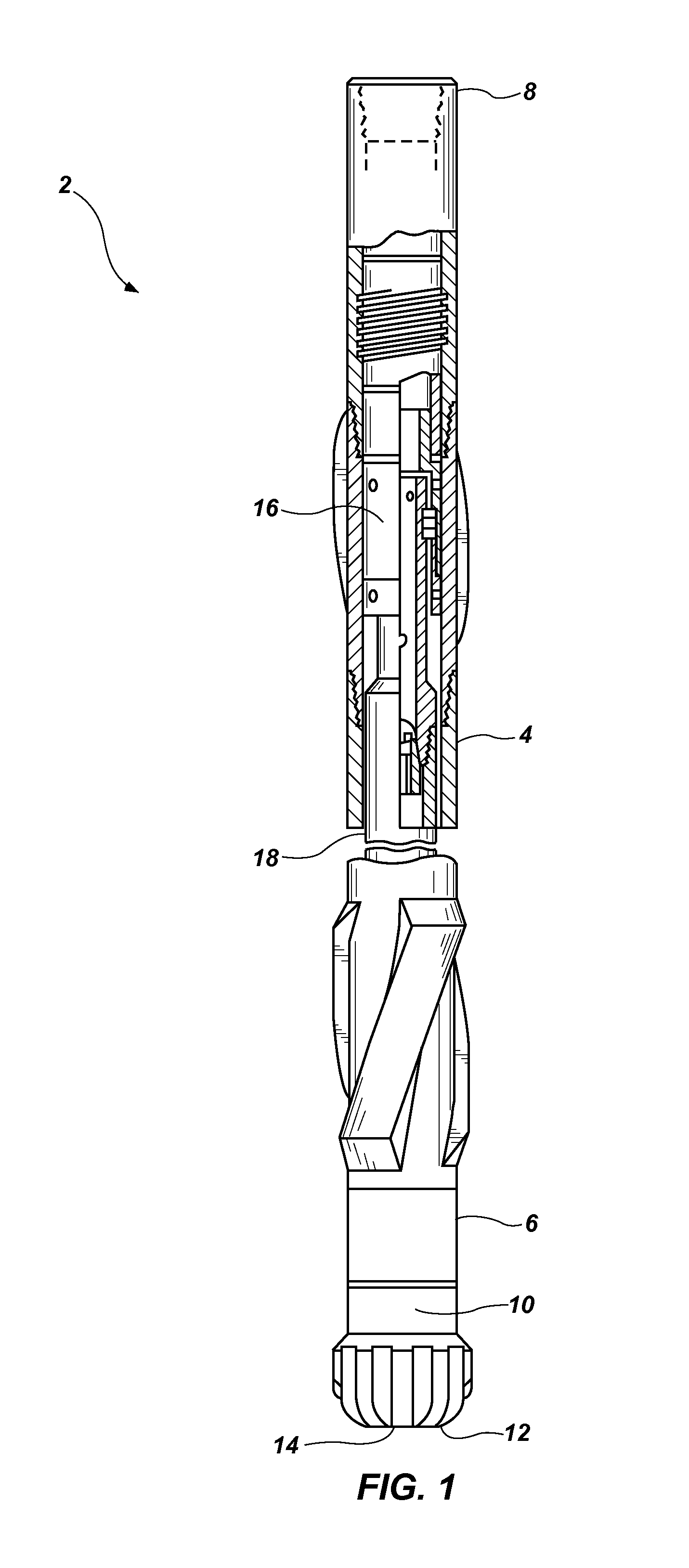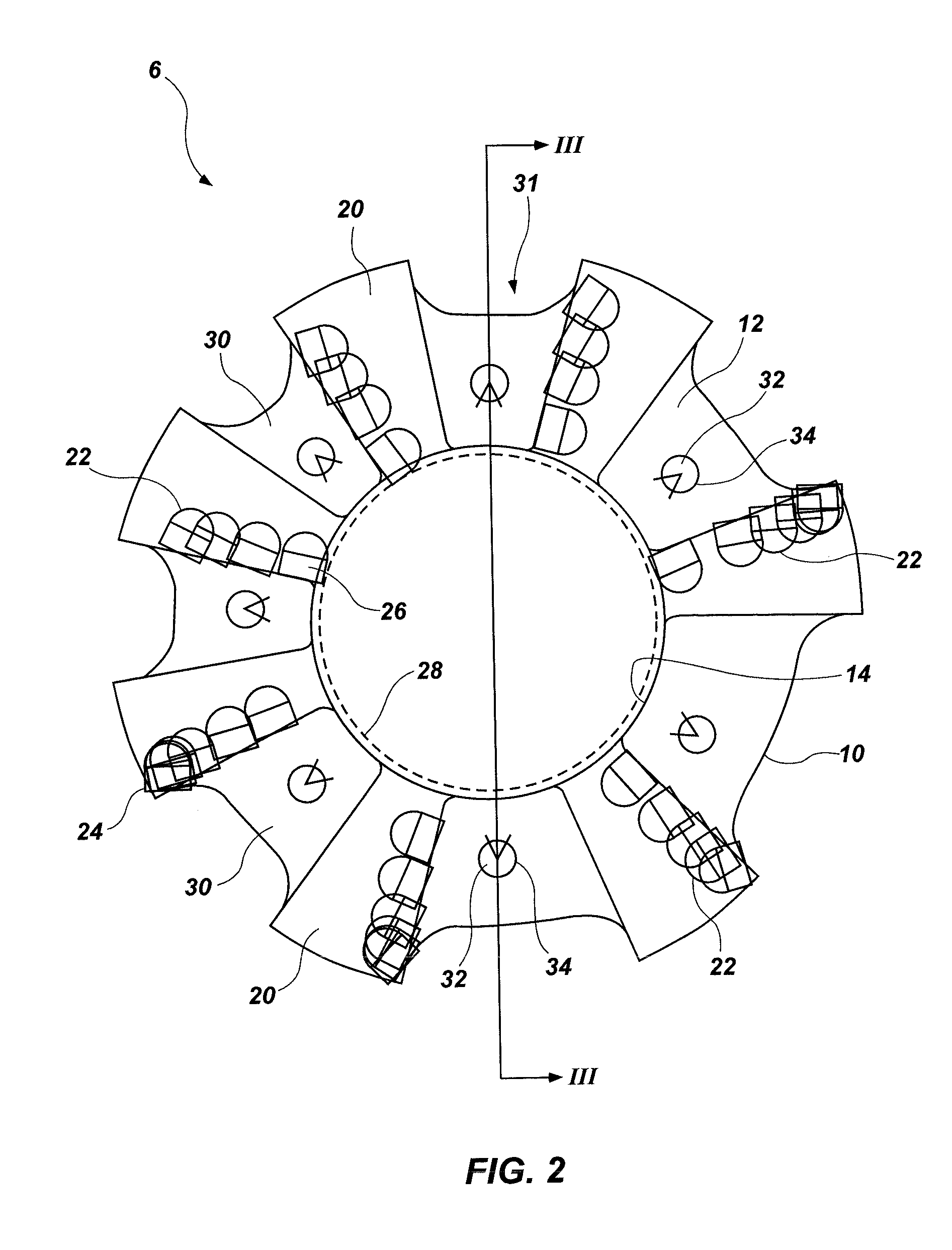Coring tools and related methods
a technology of coring tools and coring tools, which is applied in the field of coring tools, can solve the problems of affecting the quality of coring tools, the stump of coring material within the well bore, and the proneness of prior art coring barrel assemblies to damage core samples in various ways
- Summary
- Abstract
- Description
- Claims
- Application Information
AI Technical Summary
Benefits of technology
Problems solved by technology
Method used
Image
Examples
embodiment 1
[0056]A coring tool for extracting a sample of subterranean formation material from a well bore, comprising: a tubular body disposed within a bit body, a portion of the tubular body housing a core catcher, the tubular body and the bit body defining a fluid flow path therebetween; and at least one face discharge channel extending through the bit body from a face discharge channel inlet to a face of the bit body, the face discharge channel inlet in fluid communication with the fluid flow path, the face discharge channel inlet located longitudinally at or above the core catcher.
embodiment 2
[0057]The coring tool of Embodiment 1, wherein the bit body comprises one of steel, a steel alloy, and an enhanced metal matrix.
embodiment 3
[0058]The coring tool of Embodiment 1 or Embodiment 2, wherein an inner surface of the bit body and an outer surface of the tubular body define a throat discharge channel of the fluid flow path, the throat discharge channel extending longitudinally from the face discharge channel inlet to the face of the bit body, the throat discharge channel positioned radially inward of the at least one face discharge channel.
PUM
 Login to View More
Login to View More Abstract
Description
Claims
Application Information
 Login to View More
Login to View More - R&D
- Intellectual Property
- Life Sciences
- Materials
- Tech Scout
- Unparalleled Data Quality
- Higher Quality Content
- 60% Fewer Hallucinations
Browse by: Latest US Patents, China's latest patents, Technical Efficacy Thesaurus, Application Domain, Technology Topic, Popular Technical Reports.
© 2025 PatSnap. All rights reserved.Legal|Privacy policy|Modern Slavery Act Transparency Statement|Sitemap|About US| Contact US: help@patsnap.com



